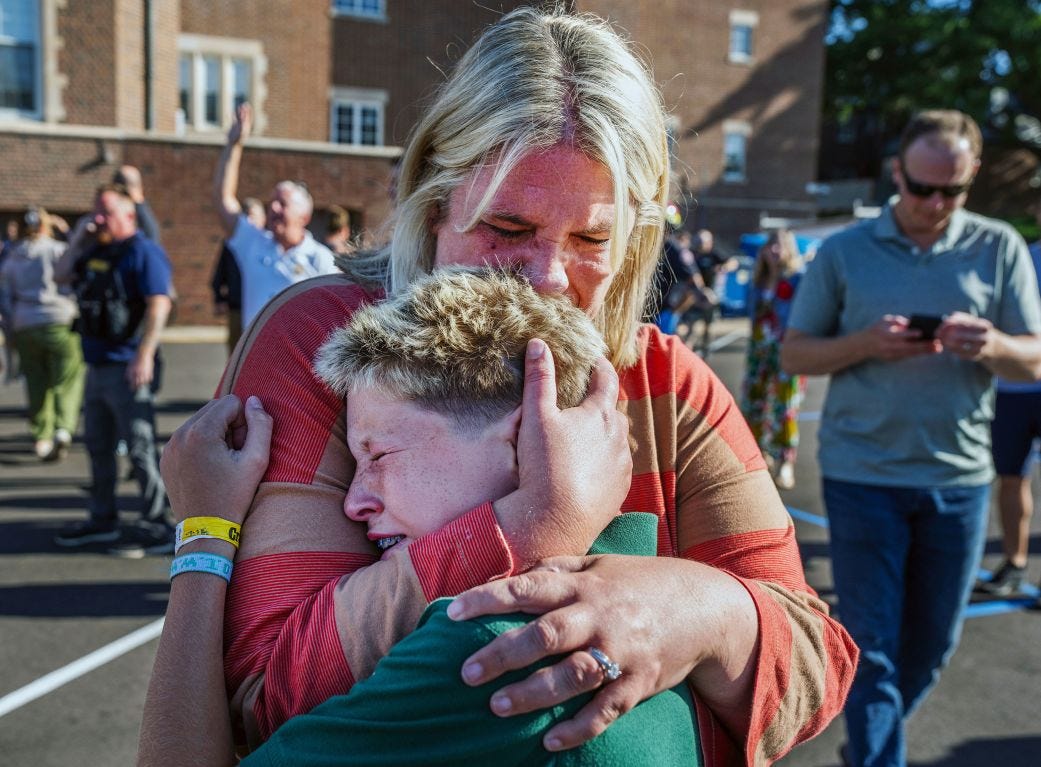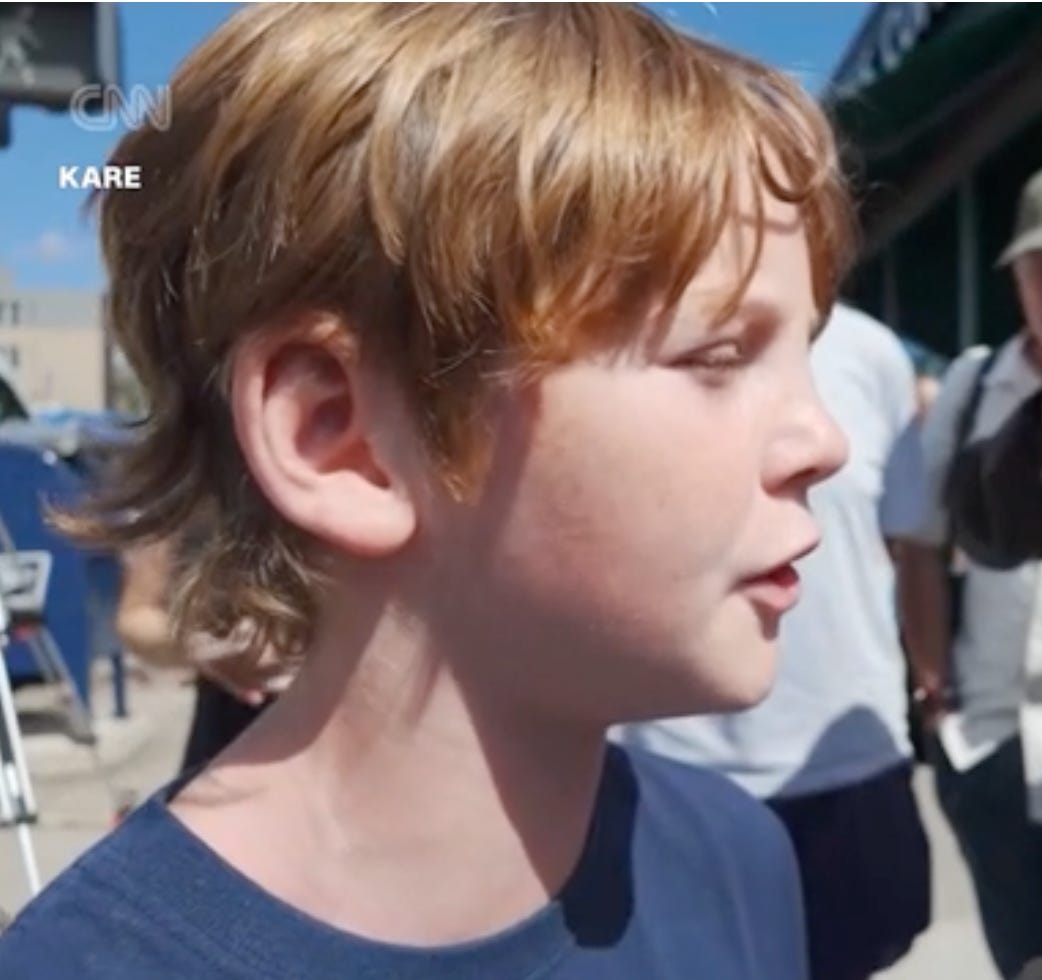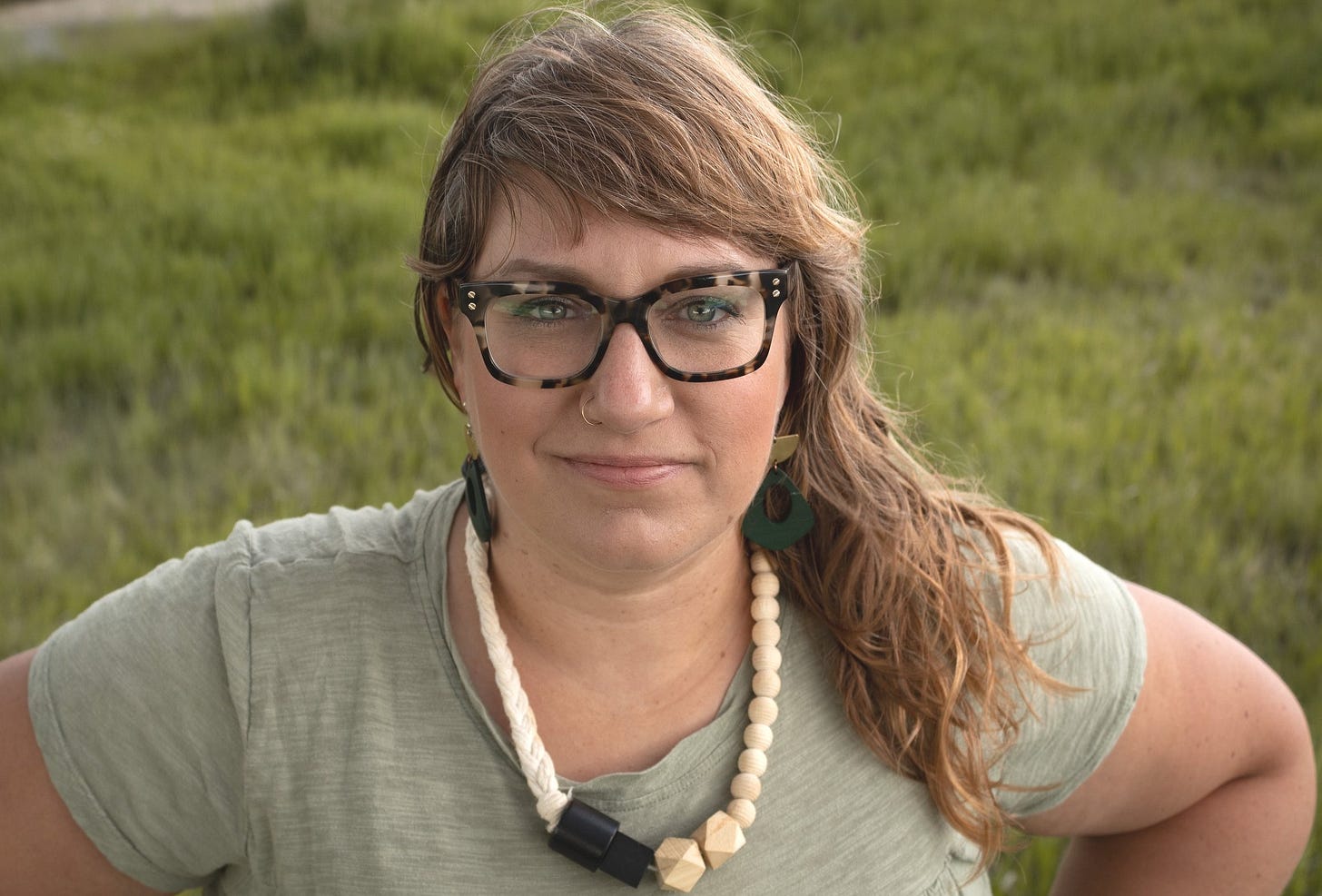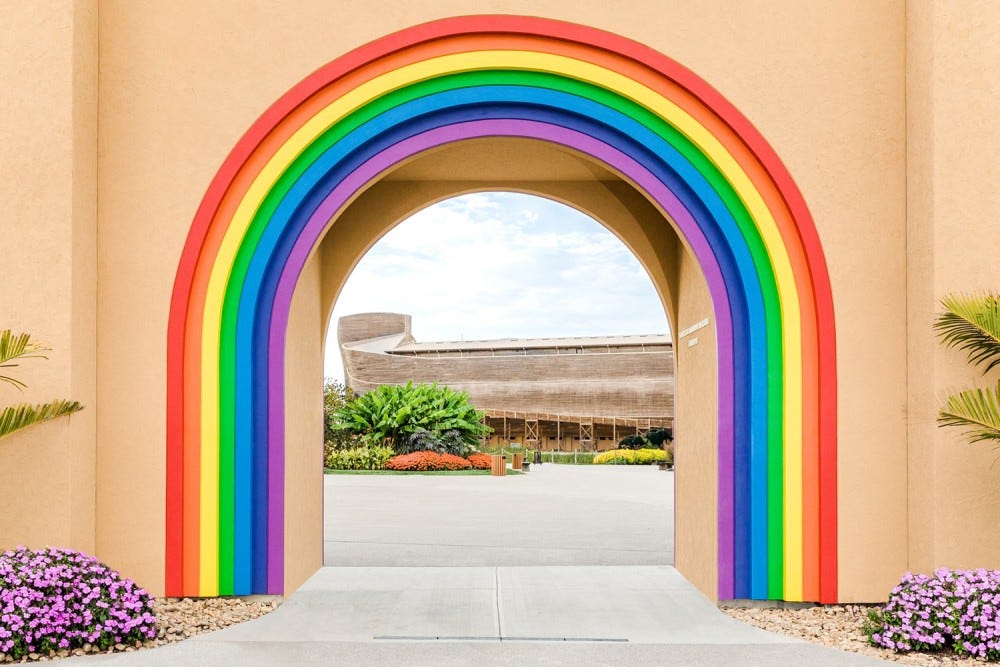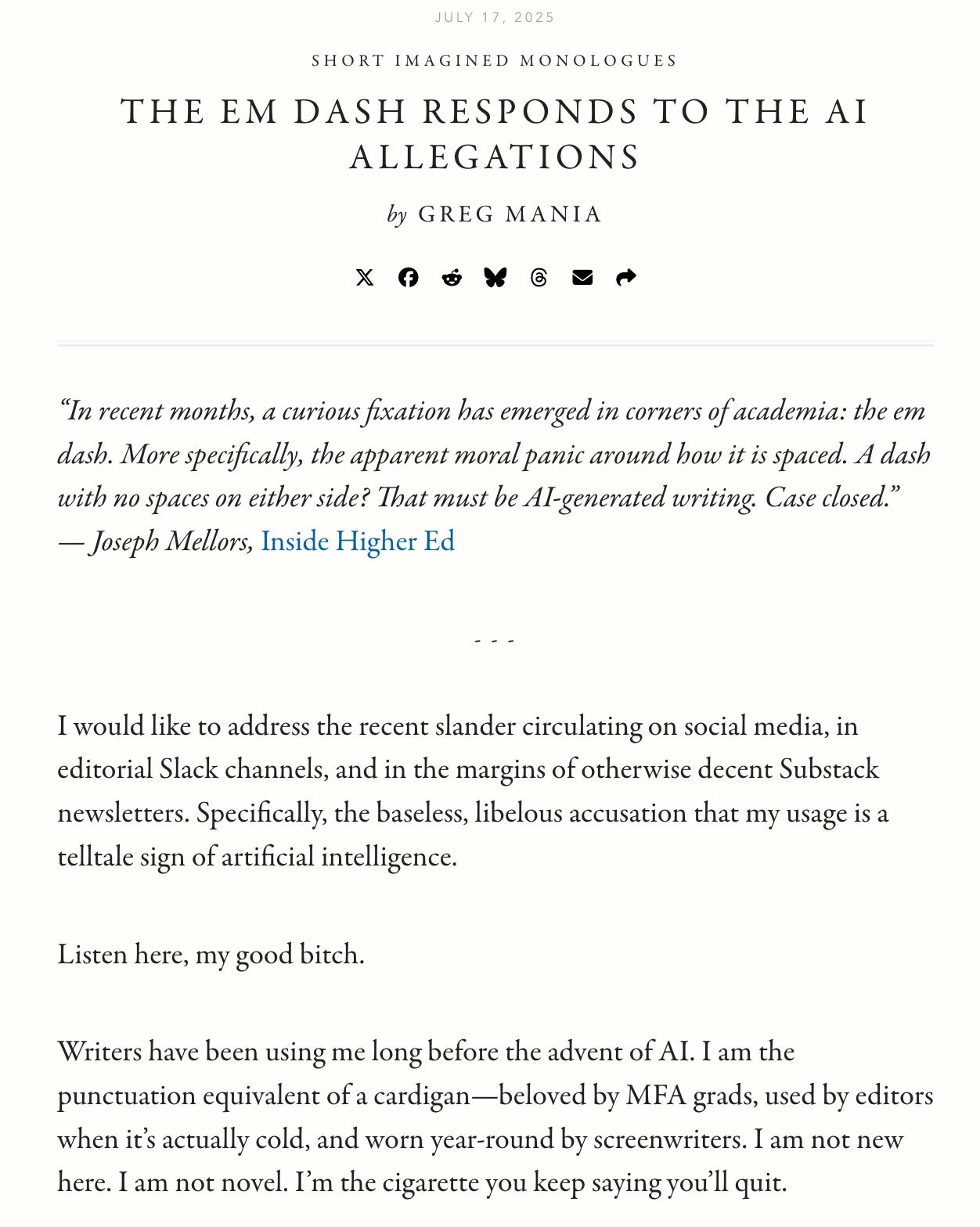Curious Reads: After a school shooting
...whose stories should we tell? And how should we tell them?
Hello friend, Liz here.
#1 This week’s top of the fold story considers the ethics of covering a school shooting—that is, when a tragedy like the Minnesota school shooting occurs, is there a “right” or “best” way to tell the story? Whose voices are centered? What information does the public need to know? And what type of images, stories, or information can become an impetus for justice and policy change?
As Minnesota students returned to school last week, tragedy pulled up a chair: a woman with three guns pointed her weapons at a private Catholic school, injuring 21 and killing 2. The students had gathered in the school’s chapel, where they worshipped during an early morning mass. The bullets entered the building through the stained glass windows.
Afterward, a debate began online about the morality of interviewing students about the event. And it got me thinking about the way we tell stories.
Normally, a “Curious Read” will focus deeply on one story—this time, I’m tackling a topic, with a single essay as home base.
Read “From Sandy Hook to Uvalde, the Violent Images Never Seen” by Elizabeth Williamson in the New York Times
Frustrated Americans ask whether the release of graphic photos of gun violence would lead to better policy. But which photos, and who decides?
What happened in Minnesota?
Church of the Annunciation began the first week of school of a new year with a theme verse: “‘For I know the plans I have for you,’ declares the Lord, ‘…Plans for a hope and a future…” Those words almost sound like a threat from this side of history, with two children, ages 8 and 10, shot dead as they sat praying in the pews of their school’s chapel, gunned down by a former student of the school.
Rather than devolve into chaos, the gunshots moved the students to action. Older children threw themselves over the bodies of younger classmates, saving their lives. One ten-year-old fifth-grader described a friend’s bravery to a reporter. He was interviewed, by the way, almost as soon as the school had been evacuated and the body of the shooter recovered. He walked over to the camera crews with his father and grandfather to share his story:
“I was, like, two seats away from the stained glass window, so the shots were… right next to me. I think I got gunpowder on my neck.1
First, when I hear it, I thought, what is that? Then the second time I heard it, I just ran under the pew and then I covered my head.
My friend Victor saved me though, cause he laid on top of me. But he got hit. My friend got hit in the back. …he went to the hospital. I was super scared for him, but I think now he’s okay.”
After a visit to the crime scene, the mayor said, “Don’t just say this is about ‘thoughts and prayers’ right now. These kids were literally praying.”
The school principal echoed his words in an address to the community: “There’s an African proverb that says, ‘When you pray, move your feet.’ So I beg you, I ask you to please pray, but don’t stop with your words.”
Cue the Calls for Gun Control
Every act of mass violence—especially school shootings—follow a narrative pattern, with predictable sides forming around their preferred explanations. I live in Colorado, and unfortunately, I have repeatedly witnessed this futile dance up close.
Like so Americans I’ve talked to, I feel weary, heart-broken, furious, and so discouraged about the legacy of gun violence and the NRA in my country. I feel especially crazed when I consider the state of violence in primary schools, leading some kids and parents to choose home education only because they do not feel safe in public settings. (And who can blame them?)
Yet the answer to school shootings is not to abandon schools, but to abandon guns, particularly the kind of guns and gun implements that make public violence so potent.
Of course, those of us who want gun reform face stout opposition, mostly in the form of groups like the National Rifle Association—who seem to have the most money and politicians in their pockets. (The NRA is also protected by misreadings of the second amendment—see this essay from the Brennan Center for Justice)
Yet a horrific shooting can often feel like the right moment to push for policy change. With the cost of guns so visible, the press advantage can feel irresistible to those seeking to reform our nation’s laws. So activists, journalists, and politicians often find themselves in the uncomfortable position of wanting to use the stories of these victims for their own ends. Granted, their ends are the same as the victims, many of whom become activists themselves after such events (for example, Taylor Schumann). But other victims may want privacy to work through their loss of safety, to grieve for their harmed or lost loved ones, and to make peace with the trauma they’ve endured.
Telling Victims Stories (in Words and Photos) is… Complicated
So, as you can imagine, parsing the ethics of storytelling around guns is difficult. A victim may come forward to share a story in the moment, but then change their mind later, wanting to retreat from the spotlight. They may request anonymity, but then want to agitate or speak up later on. The media—both the social and traditional variety—does not tend to make space for equivocation. Reactions must be immediate, and they often seem to be intractable. (No take backs.)
One way the media has sought to be sensitive to victims is to focus on the perpetrator, who is the natural enemy. This answers the natural question, why? Why did this happen? Why did the shooter do it?
Yet telling the perpetrator’s story brings its own problems. No media outlet wants to turn a shooter into an infamous figure, an anti-hero for other villains to aspire toward, though you could argue that has happened in the past. And affected families may resist coverage centers the one who harmed their love one and ignores their victims, whose stories they believe should be centered.
Further, while traditional media outlets may abide by the victims’ wishes around coverage, there’s no guarantee that social media coverage will comply. Influencers and activists generally do not. (Consider Alex Jones and the Sandy Hook conspiracy theories)
What good does storytelling do?
You may ask, since sharing such stories remains thorny, why share at all? Throughout history, the photos and testimony of horrific events have led to just policy.
According to Williamson’s essay in the NYT:
In a 2020 seminar at Columbia University’s Dart Center for Journalism and Trauma titled “Picturing Black Deaths,” Professor Bernard discussed a Civil War-era photograph of a formerly enslaved man, called Gordon in some historic references and Peter in others. Disseminated by abolitionists, the image of the shirtless man, his back severely scarred from beatings, “was essential to the development of the campaign against slavery,” she said.
In 1955, Mamie Till-Mobley invited a Jet magazine photographer, David Jackson, to photograph the brutalized body of her 14-year-old son Emmett Till, who had been savagely beaten, shot and dumped into the Tallahatchie River in Mississippi by two white men who were speedily acquitted. The images, and Emmett Till’s open coffin at his funeral in Chicago, helped ignite the civil rights movement.
In 2020, the cellphone video of a Minneapolis police officer kneeling on the neck of George Floyd, which was filmed by Darnella Frazier, a teenage witness, sparked global fury and some of the largest protests in American history. But the recording also kindled a fraught discussion over the ubiquity of images of violence against Black people, and the relatively few depictions of white victims.
The question of which violence is publicly displayed—whose hurt bodies are visible?—is an essential one. Certain bodies hold more cultural weight, in a society that prizes whiteness. And the idea of the “politics of sight” means that, as a society, we prefer for the most gruesome parts of our life together be hidden. We are fragile, and our life together is even more fragile.
In that way, revealing harm publicly can be a generative act of resistance, as it was in the case of the enslaved man who allowed activists to share photos of his scarred back across the United States. [I will not share that photo, but you can see it here]
As I insinuated earlier, the fact that journalists interviewed a 10-year-old boy only minutes after he had left behind the traumatic scene of an active shooting event… that was controversial.
I will point out that his father and grandfather were with him as he spoke to reporters. Even so, would I let my kid talk to them, even if he requested it? No way in hell. I cannot comment on the motivations of these families or the reporters, but to me, it seems as if the boy himself wanted to commend his brave friend. And if family members of victims request a news outlet share their perspective or photographs, their request should be considered seriously.
I can also relate to this boy’s instinct to tell his story. As a memoirist, I need to own the narrative of my own story. If I lived through something like this, knowing me, I’d be taking notes in the moment. And I wouldn’t want a journalist to tell my story, I’d want to use my own voice, share my own photos, and step into the public eye voluntarily. That would be an important step in my own healing, a way of asserting autonomy and taking back the event from the narrative of the perpetrator.
Reflection
In researching this topic today, I stumbled upon this incredible example of victims’ stories shared in the media—and it’s in a college newspaper. After a shooting event at the University of North Carolina, the student paper, The Daily Tar Heel, shared the stories of students, and I find their treatment to be both inspiring and respectful.
Editors anonymized text messages sent in the minutes the active shooter was patrolling around campus, and they used those messages to retell the experience of the event as it was lived by students. The resulting stream-of-consciousness document provides an intimate account of surviving a school shooting without forcing any one student into the spotlight. And it’s deeply moving, offering a compelling argument for gun reform.
There is no single way to tell a victim’s story after a mass violence event.
However, I would urge reporters to move gently, to respect the autonomy of individuals and communities, and to tell the truth. Other than those guidelines, I believe victims themselves should decide whether they tell their stories in public.
And if you or someone you know has been through a school shooting, frankly, the same rules apply. Treat their story gently, tenderly, give them space to tell the story their way and to decide when and how they want to share. Preserve their autonomy and privacy while offering your presence. Pray with your feet, and most of all, be with them.
I wish we didn’t need their stories to amplify the need for policy reform, but their stories may actually help to change minds. I don’t know for sure. But I believe victims themselves must choose whether to join the parade of us asking for change, or whether to preserve their privacy. Either way, they can be assured that we’ll be praying and walking on their behalf.
Thanks for reading.
Warmly, Liz Charlotte Grant
More Curious Reads

#2 Turns out, there is an extra state of matter and it is RANCH DRESSING. —the Unexplainable Podcast, Vox Media
“As a kid in school, I learned about four states of matter. Solid, liquid, gas, and then plasma. But recently, I spoke to a physicist named Rae Robertson-Anderson, and she told me that there is actually another state of matter out there: Ranch dressing. Or shampoo, or scrambled eggs, or snot, or even to your eyeballs. Also toothpaste and yogurt, ketchup. Anything that you think of, anything that's like squishy or gooey materials that are sometimes somewhat like a liquid and somewhat like a solid. All of these are part of this extra state of matter. It's… called soft matter.”
…I haven’t been able to stop thinking about this episode since I listened to it earlier this summer. Because it means that we STILL do not understand the science of our everyday lives.
#3 Welcome to the age of the spiritual chatbots (and their influencer handlers).—Wired Magazine
“A growing number of prominent social media figures are now co-opting the language of New Age spirituality, wellness, and quantum woo to position AI as a gateway to numinous wisdom, through which their followers can inch closer to enlightenment.
[Even] OpenAI CEO Sam Altman referred to the company’s AI products in a September X post as “magical intelligence in the sky”—a seemingly tongue-in-cheek comment comparing them with traditional conceptions of God.”
#4 Did your summer include a road trip? Here’s my version: read about my family’s road trip to Noah’s Ark this past autumn.—The Christian Century
#5 Elizabeth Gilbert’s new memoir is… strange. As in, “did she just confess to attempted murder?”-level strange.—The New Yorker
Just for Fun…
I’m never giving up the em dash, which you’ll have to pry from my lifeless fingers, Mark Zuckerberg. (Read the whole thing at McSweeney’s Internet Tendency)
Actually, a bullet fragment struck the student, lodging itself millimeters from his carotid artery. Surgeons removed the fragment this week, and both he and his friend are recovering well.



